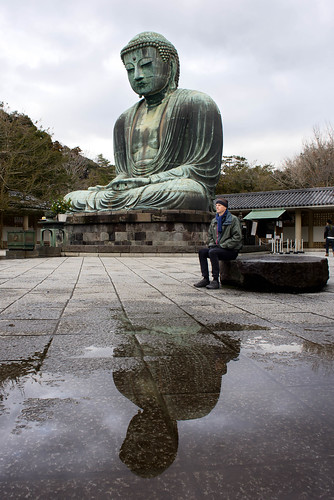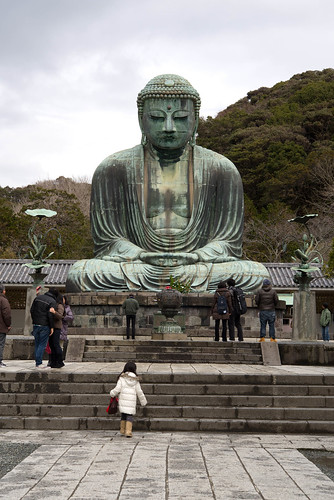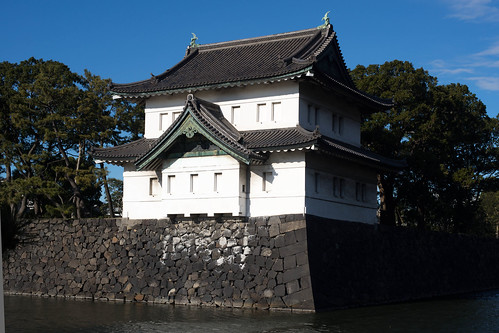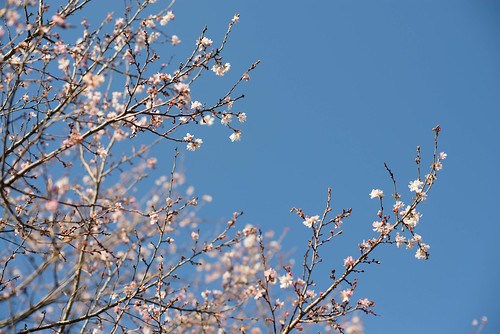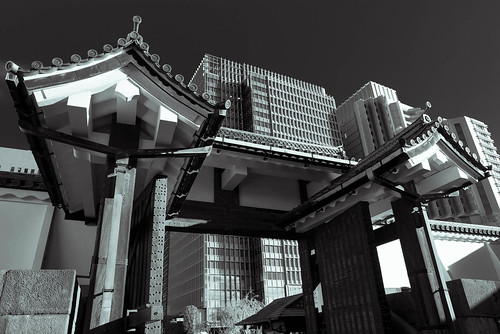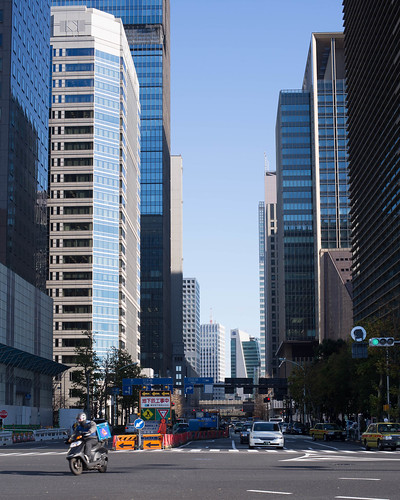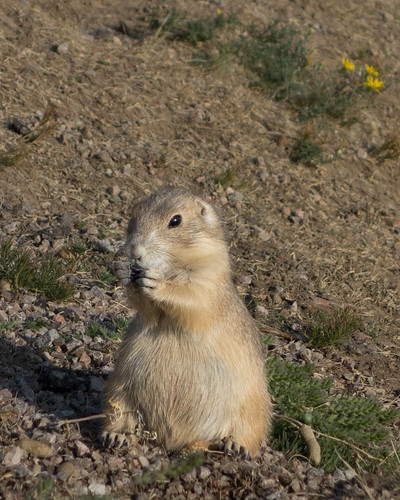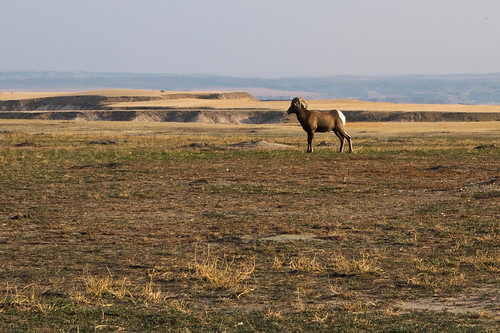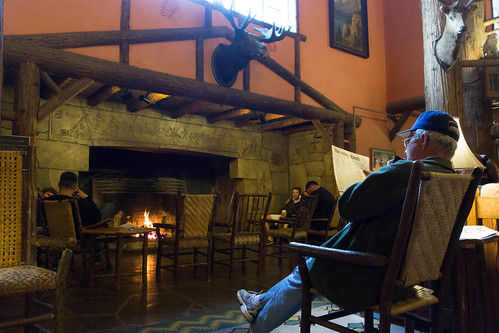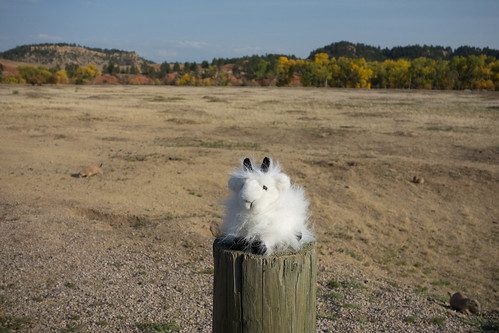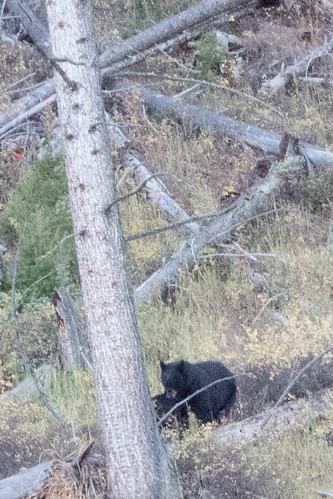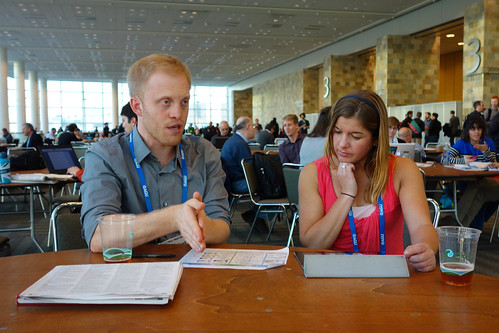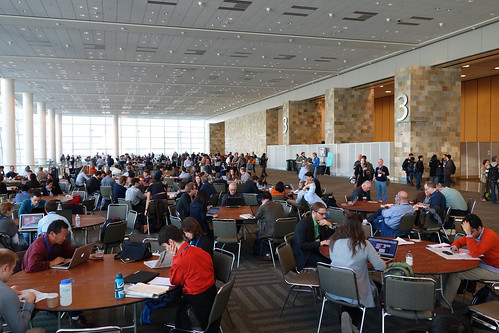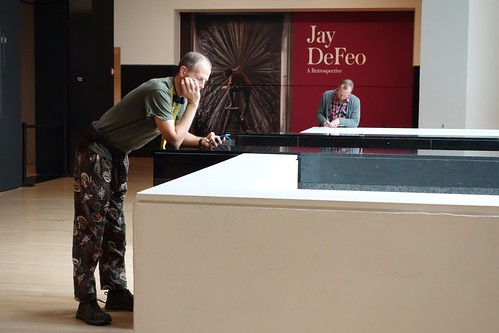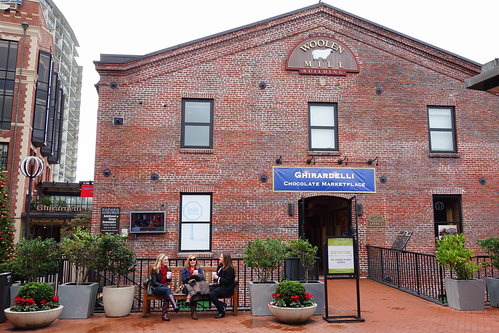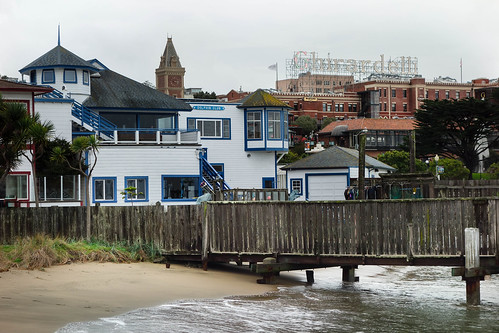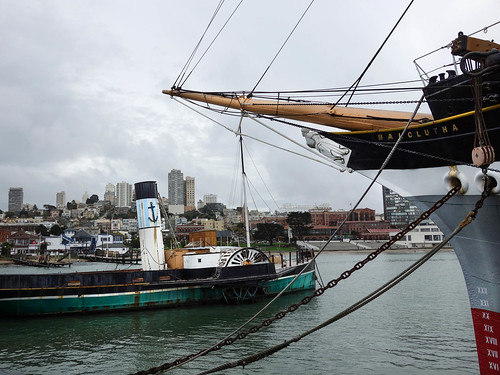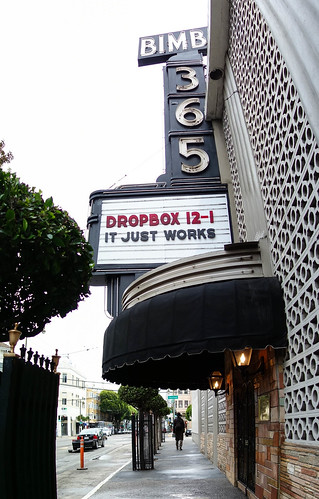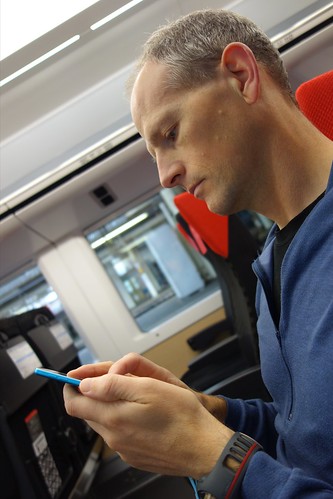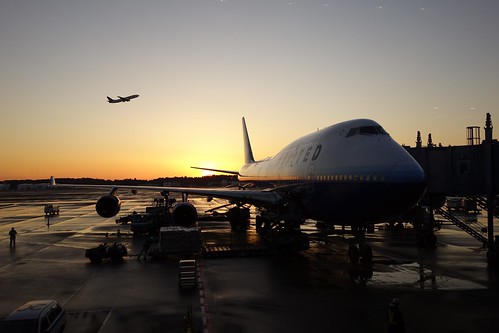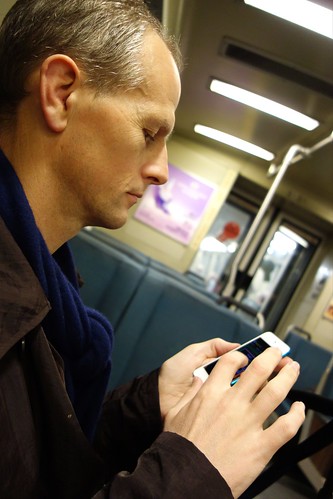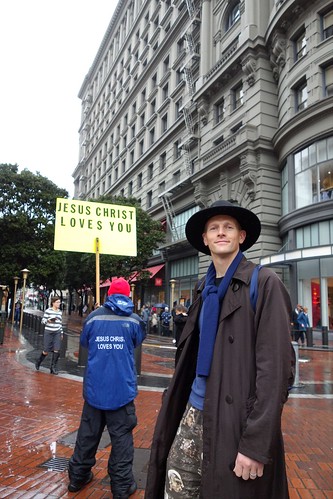Sorry for the delay, but I was too busy having fun at the AGU to blog about it. For some reason, we had no real jet lag at all on our trip, either while over there or following our return to Japan. I don't really have much of a clue why it sometimes works out like that, but it's nice when it does. Also, we've really sorted out the food situation in SF. There are lots of good sandwich shops for lunch, which is a much better option than trying to fight your way in and out of the overcrowded restaurants during the lunch break. Of course the huge range of restaurants is good for dinner, even though one unexpected side-effect of discovering possibly the
best pizza in Tokyo is that the best pizza in SF is not so special any more. San Francisco is a good city for a huge conference like the AGU. The weather was mostly nice this year, apart from the fun run which happened to be scheduled just perfectly for the few hours in the week when it absolutely tipped down.
The scientific program seemed better than usual, too. First day, I started off with some last millennium stuff. The convenors had generously invited me to talk about
this work, but I thought it would be appropriate to decline on the grounds that I hadn't done anything new since I talked about it at a very similar session (albeit with different convenors) the previous year! There was actually someone doing rather similar data-assimilation-y things, which was interesting. I'm not sure if and when I'll have time to work on this again. I think jules was learning about ice sheets at the same time.
I had a walk round the posters after lunch. This is still a bit of a disaster area as far as I'm concerned. The "author in attendance" period is supposed to be a self-selected hour within a 4h:20 time window, so it's almost impossible to meet anyone without prior arrangement. At the similarly vast (well, half as big) annual EGU meeting, there is a 90 minute early evening slot where - at least within the Climate division - there are no oral presentations scheduled at all, so all the poster authors are present together and it's an excellent opportunity for (wine-enhanced) discussion and mixing.
Last session on Monday was on atmospheric feedbacks, which in practice included climate sensitivity stuff. There was a rather silly presentation on "changing climate sensitivity" which IMO just pointed to the inappropriateness of trying to analyse all historical climate changes as if they were a response to an imposed CO2 forcing, which of course they were not. The atmos feedbacks continued into the following morning, after which I went to the "communicating climate science" session. That was the expected knockabout stuff, though unfortunately Dan Kahan (who would probably have had the most scholarly perspective) withdrew. Naomi Oreskes talked about her theory of "erring on the side of least drama" which I didn't find completely convincing. Now I've seen
the paper, her analyses of scientific underestimation seem rather less compelling than she made it sound in the talk. I should come back to this in a later post. Jules tried to get into the
Charney Lecture, but the room was too full. However, it is available on-line. I left a bit early in the afternoon, as we had an important dinner date with some lobster, quail, lamb, steak and cheese. There may be Tokyo restaurants to match
Gary Danko, but not at that price.
Wednesday morning was the
not-so-much-fun run. Actually, it wasn't that bad running in the rain for once - but I suspect the novelty would quickly wear off - and least it wasn't all that cold. Drying off back at the hotel caused us to miss the start of the two morning Uncertainty Quantification sessions, which was a bit of a shame as this had several interesting-looking talks and is not available on video. After lunch I went to
Stephan Lewandowsky's "Construing Uncertainty" which was more social than hard science, including Oreskes again. Then jules was talking in the last UQ session, on the use of paleoclimate simulations for testing and validating models. Lenny Smith also gave a very good and thought-provoking talk as always. This meant I missed
the Lorenz lecture, given by Eugenia Kalnay, but I knew it was being videoed, and have watched it subsequently. I highly recommend it to anyone interested in the theory and practice of how prediction is done in highly complex and nonlinear systems such as weather forecasting. (The preceding lecture included in the same video may not be so widely interesting.)
Charles Jackson also talked in one of the UQ sessions, and that night we went out to dinner with him (and two Japanese colleagues) afterwards at the
Thirsty Bear. Once the shouty early-evening crowd have moved on, it's a surprisingly civilised place for good pub grub.
Thursday morning was a bit thin in the program, and I believe we might have had a bit of a lie-in after the night before :-) The afternoon had a big paleoclimate session, with several people each talking about their own latest core and its interpretation (or so it seemed to me), and some broader syntheses including my presentation on the Last Glacial Maximum. I will also blog about this in more detail, after doing what I hope will be some final revision to the paper.
After a fairly packed week, (and contrary to the previous year) Friday was almost a complete blank. Or at least it would have been, had Lewandowsky et al not conveniently arranged an off-site discussion meeting which followed up on their "construing uncertainty" session. I'm always a bit dubious of these talking shops, and I'm not sure exactly how much real progress was made, but it was surprisingly fun and interesting, and it was good to have the chance to discuss and expand on ideas in a much more flexible and informal format than the tightly scheduled AGU sessions. Attendees included a large number of the usual blogging suspects (
Rabett,
Nielsen-Gammon,
Sceptical Science,
Easterbrook,
Baer, and probably one or two more I've forgotten), though Michael Tobis was a surprising absentee. One point of interest was the broad consensus among the climate scientists present that things like Hurricane Sandy and other extreme events were not the most sound basis for convincing people about the reality and/or impact of climate change. Although it's plausible that many extremes will get more extreme, the evidence (both theoretical and observational) for many specific examples (such as, changes in the frequency and size of storms hitting NY) is not really that solid yet.
It was noticeable how much quieter the main conference centre was by the time we returned to it after lunch. Not many of the participants stay to the bitter end. We spent the afternoon in a cryosphere session. I suppose it is well-known within the field, but it was interesting to see to what extent the ice sheets vary even within the supposedly "quasi-equilibrium" state of the Last Glacial Maximum. I doubt it has major effects on broad scales, but certainly helps explain how some people can find historical evidence of vegetation in locations where the models have big fat ice sheets :-) (This issue only arises close to the the edge of the big fat ice sheets, to be fair.)
And this year, after the weekend of travel back home, we did make it back in time for the carols in Yokohama, followed with some mince pies that I made earlier.
